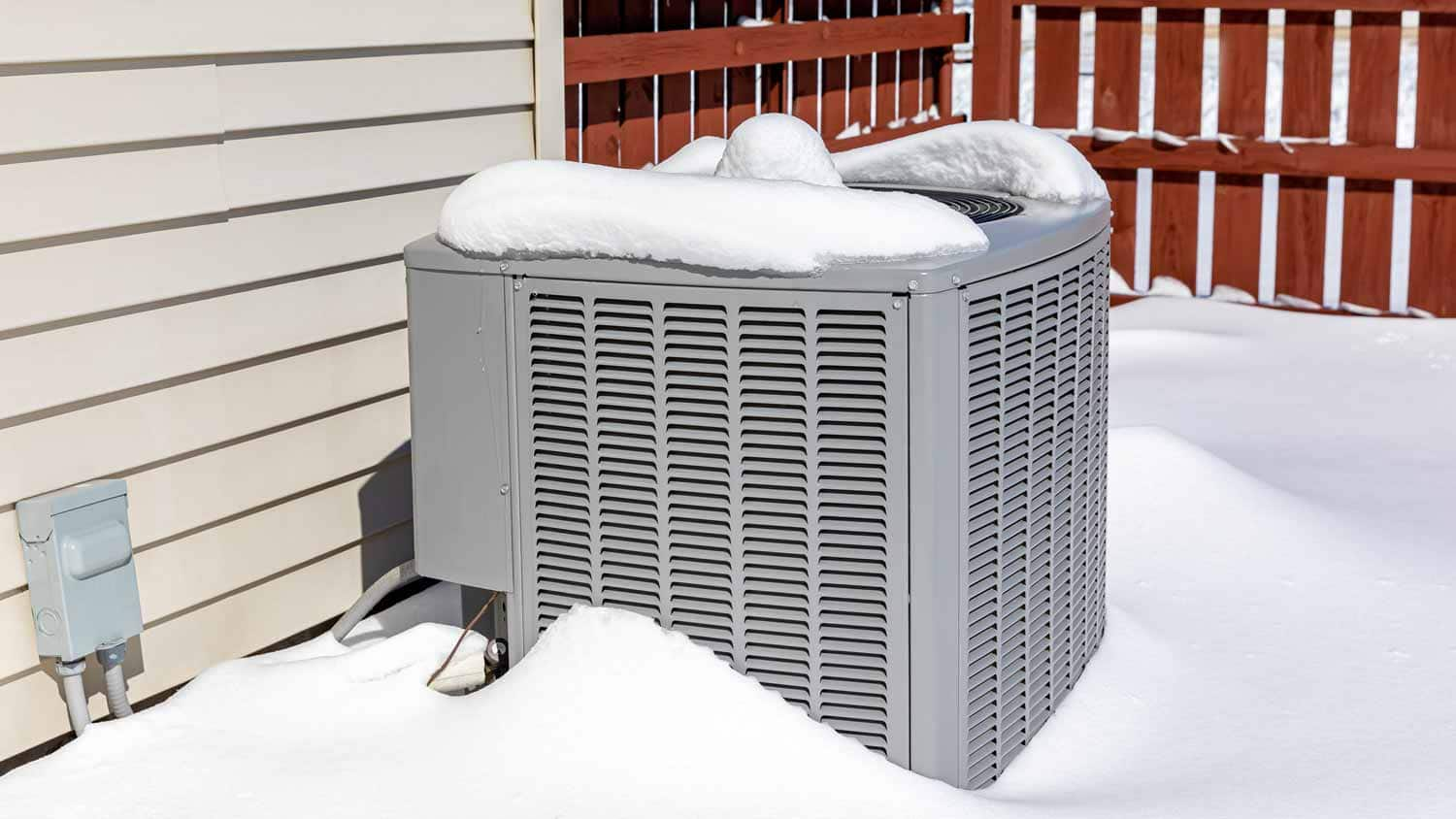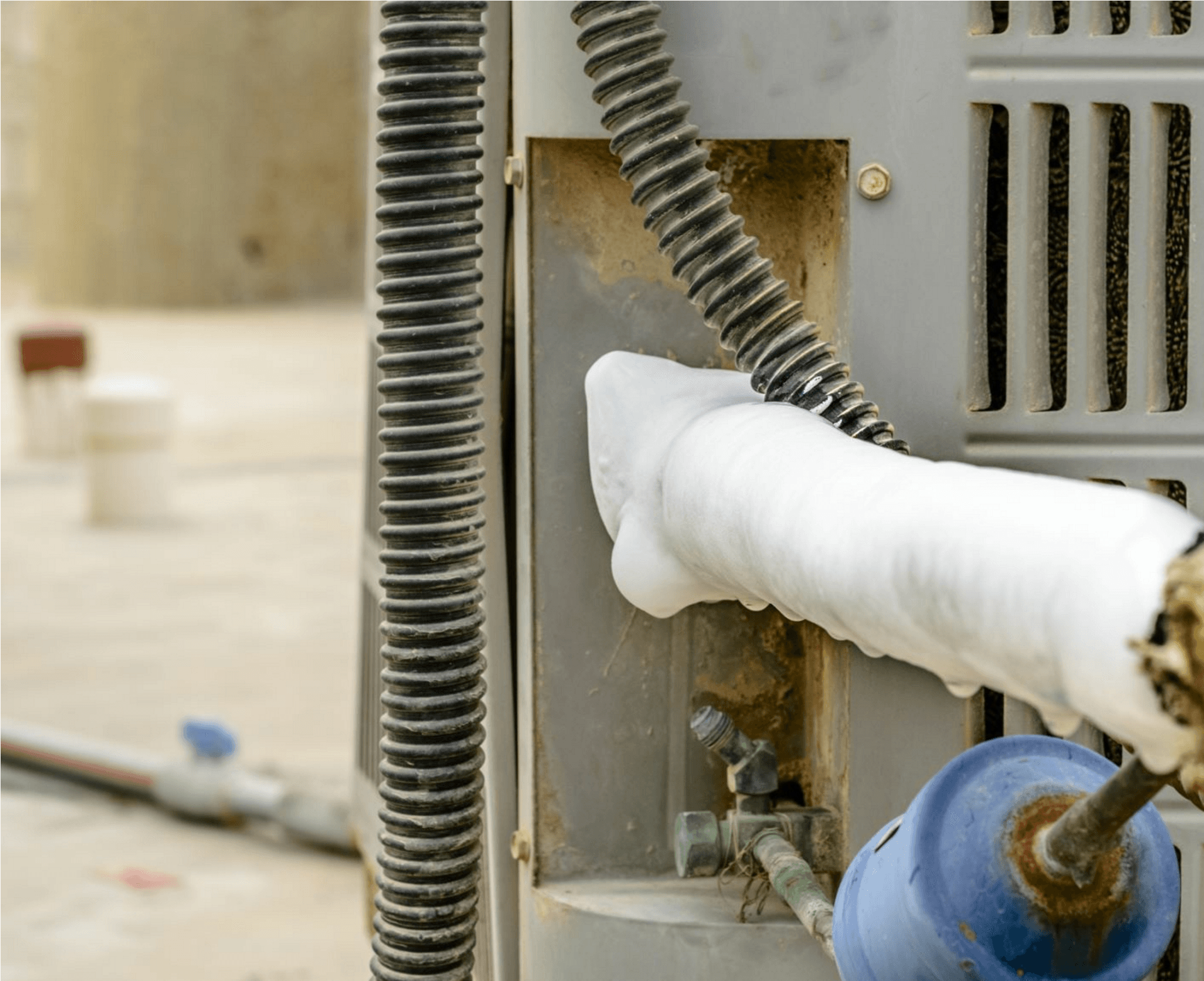Troubleshooting a Frozen AC Pipe - Effective Solutions for Home Cooling Systems
Troubleshooting a Frozen AC Pipe - Effective Solutions for Home Cooling Systems
Blog Article
We have stumbled upon the article pertaining to Why Is Ice On My Outside Air Conditione down the page on the internet and believe it made perfect sense to relate it with you in this article.

Introduction
Finding that your AC pipeline is frozen can be worrying, specifically during warm summer season when you depend on your air conditioning unit one of the most. Recognizing what to do in such a situation is essential to stop additional damages to your air conditioning system and guarantee your comfort indoors.
Understanding the Causes
Numerous aspects can contribute to the freezing of an air conditioning pipe. Recognizing these reasons can aid you deal with the problem successfully.
Lack of Airflow
One common reason for an icy air conditioning pipeline is inadequate air movement. When the air flow over the evaporator coil is limited, it can cause the coil to go down below freezing temperature level, resulting in ice formation on the pipeline.
Low Refrigerant Levels
Inadequate cooling agent levels in your air conditioning system can additionally result in a frozen pipeline. Low cooling agent levels can trigger the stress in the system to go down, bring about the cold of wetness on the evaporator coil.
Cold Weather Conditions
In cooler environments, freezing temperature levels outside can add to the freezing of air conditioning pipelines. If your AC device is not effectively shielded or if there are leakages in the ductwork, cold air can infiltrate the system, triggering the pipe to ice up.
Dirty Air Filters
Filthy or stopped up air filters can limit air flow in your a/c system, bring about various problems, including a frozen pipeline. It's vital to replace or cleanse your air filterings system regularly to guarantee correct air flow and prevent ice buildup.
Indicators of a Frozen Air Conditioner Pipe
Identifying the signs of a frozen air conditioning pipe is vital for prompt activity.
Minimized Airflow
If you notice a significant reduction in airflow from your vents, it can indicate a frozen pipe.
Ice Buildup on the Pipe
Noticeable ice accumulation on the cooling agent line or the evaporator coil is a clear indicator of an icy air conditioner pipe.
Unusual Sounds from the Unit
Uncommon sounds, such as hissing or bubbling, coming from your AC device can indicate that there's ice existing on the pipeline.
Immediate Actions to Take
When faced with an icy air conditioner pipe, it's necessary to act quickly to avoid additional damages to your cooling system.
Shutting off the a/c
The first step is to turn off your air conditioning system to stop the system from running and worsening the issue.
Looking for Blockages
Examine the area around the interior unit for any type of blockages that might be obstructing airflow, such as furnishings or curtains.
Thawing the Pipe
You can make use of mild approaches like putting towels soaked in cozy water around the icy pipe to help thaw it gradually.
Preventive Measures
Taking safety nets can assist prevent future incidents of a frozen air conditioning pipeline.
When DIY Methods Fail
If your efforts to thaw the pipeline or address various other issues are unsuccessful, it's time to hire an expert.
Importance of Hiring a Professional HVAC Technician
A certified HVAC technician has the know-how and tools essential to identify and repair issues with your AC system safely and effectively.
Normal Maintenance Checks
Set up routine maintenance checks with a specialist HVAC professional to ensure that your air conditioner system is running efficiently.
Transforming Air Filters
On a regular basis change or cleanse your air filters to stop air movement constraints and keep optimum performance.
Protecting Exposed Pipes
If your air conditioning pipes are revealed to cool temperature levels, think about protecting them to prevent cold during winter season.
Seeking Professional Help
If DIY methods fall short to deal with the concern or if you're uncertain about just how to proceed, it's ideal to seek support from a qualified HVAC specialist.
Verdict
Dealing with an icy air conditioner pipeline can be an aggravating experience, but understanding just how to react can help lessen damages and restore convenience to your home. By understanding the causes, identifying the indicators, and taking punctual action, you can efficiently attend to the problem and prevent future occurrences.
Frozen AC Line: Why It Happens & What To Do About It
A frozen AC line can be a rather peculiar sight in a place like Phoenix, Arizona where nothing ever freezes. In this post, we’ll discuss what makes an air conditioner line frozen – and what you can do about it.
Dirty Air Filters
Did you know that you should be cleaning or replacing your air filters on a monthly basis? Failing to do this can result in airflow issues that, in turn, cause your evaporator coils and lines to freeze over. You’ll notice a buildup of ice on both components, although the buildup on your pipes will, of course, be more evident unless you open your air condition up to reveal the coils.
What To Do About It
Give your air filter a good cleaning if it’s reusable. If not, replace the filter outright. Next, switch your air conditioner’s fan setting on and leave it there for 2-3 hours. This will draw warm air in, helping to thaw your evaporator coil. You can also check out this article for some tips on cleaning the coils themselves if you’d like to speed the process up. Before you switch the unit back to its normal state, make sure the supply vents are completely unobstructed and free of dust or other debris.
If you keep having this issue even after replacing your filters regularly, contact a local HVAC repair company and have them inspect your evaporator coil, ductwork, and any other components that may be at fault. If you live in the Phoenix, Arizona area, give American Home Water and Air a call.
Low Refrigerant Levels/Leakage
What To Do About It
Contrary to what air conditioner “recharge” companies often tell their clients about refrigerant, it should never need to be simply refilled. You see, refrigerant runs in what experts refer to as a “closed loop.” Refrigerant really shouldn’t be leaving that loop. If it is, you’ve got a leak.
Paying someone to come and pump more refrigerant into your system (aka “recharge” it) isn’t the solution. Doing that will simply kick the can down the road. Besides, refrigerant leaks can be harmful to the environment and people in your home.
Rather, you need to take care of the leak with the help of a technician. Check out this article for some more information about dealing with air conditioners that are leaking refrigerant. Before you contact a technician, switch your thermostat to the off position. Then, switch the fan setting on and let it run for 2-3 hours so the unit can thaw.
Improper Temperature Setting
Improper temperature settings can also cause a drop in your air conditioner’s pressure. What many people don’t realize is that air conditioners are actually designed to run when temperatures have fallen above roughly 60 degrees Fahrenheit. If you run the unit when it’s cold outside, you’ll run into many issues, including frozen components.

Hopefully you enjoyed reading our topic on Have a Frozen AC Line? Here’s How to Fix It. Thanks a ton for taking a few minutes to browse our piece of content. Do you know another individual who is curious about the topic? Take a moment to share it. Thank-you for taking the time to read it.
Click Here Report this page